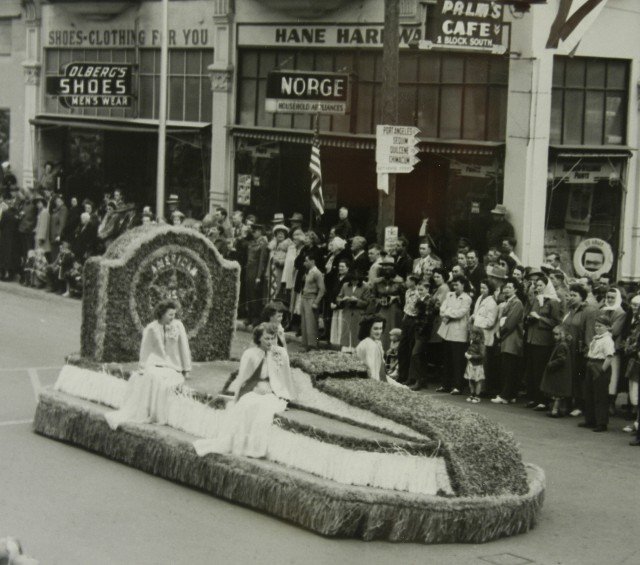The Sequim Irrigation Festival celebrates the work that D.R. “Crazy” Callen and his partners did to design and develop the Irrigation Ditches that brought water from the Dungeness River to the parched prairie. The first headgate on the Dungeness River was lifted on May 1, 1895. On May 1, 1896 the first celebration took place at Crazy Callen’s farm. This was the start of a tradition that would become the oldest continuing festival in Washington state.


Courtesy of Soroptimist International of Sequim
The First Irrigation Festival
Bringing irrigation from the Dungeness River to the brown and parched prairie began as a dream of four pioneer settlers who were visionaries of their time. D.R. Callen had moved to Sequim from an irrigated area in Colorado and he convinced James R. Grant, H. Hucksford and Captain Thomas Jones that “water was wealth.” Together they set out to persuade their neighbors to go along with the idea. The skeptics called them “crazy” and said that water could not be made to run uphill; but there were those who believed. On July 20, 1895, a group of about 20 people held the first meeting of the Prairie Ditch. Incorporation papers were signed November 18, 1895, and the hardy pioneers worked all winter long building the ditch and flume.
Money was scarce and the surveyor was paid partly in potatoes. Everyone gave what they could and the women cooked for the workers. Even the children helped by carrying water, running errands and tromping clay into the gravel. Finally, the following spring it was time for the “big day.” On May 1, 1896, the residents of the Dungeness Valley and surrounding communities came by wagon, on horseback and on foot to witness the opening of the headgate for the first time. Edgar B. Wicklander in “The Grants of Sequim Prairie,” gives a detailed account of that first celebration: (synopsis)
Historic Photo Gallery









“The day dawned fair and warm for May. The Grants arrived at the picnic grounds while the dew was still on the grass. Other families arrived about the same time, driving their wagons from the nearby Sequim prairie settlement. Those from some close farms walked the dry roads. Later in the morning groups arrived from Port Angeles.
“The Bicycle Club of Port Townsend chartered a tug boat for the trip to Port Williams. They docked at 11 a.m. and some rode their bicycles to Sequim while others loaded their vehicles into wagons. The shining cycles amazed the young people of Sequim, but the dress of the ‘city folk’ was of interest to everyone. The men dressed in turtle neck sweaters, knickers and caps and the ladies wore ‘very daring’ short skirts, almost up to their shoe tops. Their outfits were completed with shirtwaists, jackets and perky hats and the Sequim farm kids thought they all looked rather funny. Long wooden tables had been set up and covered with hams, roasts of lamb and pork, salads, breads and chicken cooked every way possible. Each family had brought enough food for themselves and one or two other families, and no one went away hungry.
“At the appointed time a group of men who had built the ditch went up to the upper end to turn the waters of the river into the new flume. As usual things did not go according to plan. When the headgate was raised the water refused to turn. Undaunted, the men located a wagon load of clay and picked up a wagon full of kids. They dumped the clay at the head of the flume in the gravel and told the kids to jump in. The kids got in to the river’s edge in their bare feet and tromped the clay into the gravel until the water flowed over it into the flume. It wound its way, the muddy water slowly following the flume, then into the dusty prepared big ditch, and finally all the way to the furrow, right into the picnic area. The skeptics who had said that water couldn’t run uphill were at last convinced.”
